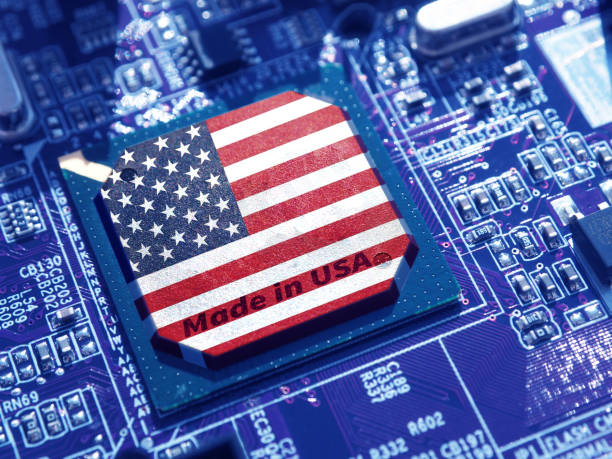Have you ever tried to purchase a computer assembled in the United States and comprised only US components? You can’t. We found 43 American companies that produce high-quality technology products.
The tag “Designed by Apple, California” is on every iPhone box. It conjures up the vision of thousands in Cupertino working feverishly to invent the latest technology. Apple will ship overseas the plans it creates for iMac or AirTag. Silicon Valley last made its products decades ago.
A Harris Poll 2022 conducted by Retail Brew (Opens in new window) on shopping preferences shows Americans are willing to purchase more US-made goods, so long as they don’t cost any more than their competitors’ products. Seventy-two percent of respondents to the poll said they were looking for American-made goods; 48 percent said they would pay 10-20% more for a “made in America.”
The majority of manufacturing jobs in the US are good ones. At least, they’re more lucrative than selling imported goods. According to the Bureau of Labor Statistics (Opens in a New Window), assemblers, fabricators, and retail sales workers earn, on average, $41,420 annually.
Our nation must catch up to our biggest competitors in research and development, manufacturing, and training. The Biden administration said that investing in our infrastructure, competitiveness, and creating good-paying jobs in the future has never been so important.
Tech leaders have told us that manufacturing is also about autonomy. US laws govern US factories and are physically close to US customers. When we cross borders, we can’t control anything from our employees’ working conditions to consumers’ rights.
What if all manufacturing takes place in Asia? Greg Slater is Intel’s senior global and regulatory affairs director and vice president. “Qualcomm, Apple, and others should all be worried.” No matter the reason, you’re stuck if a switch in Taiwan goes out.
Scott Paul, President of the Alliance for American Manufacturing(AAM), told CNN (Opens in new window).
To survey the state of high-tech manufacturing in the United States, we identified 43 companies that manufacture technology devices nationwide. These include PCs and servers, consumer electronics and home audio, electric vehicles, and EV battery manufacturers. This list is incomplete. We only had companies we could verify were manufactured or assembled in the United States.
Large and smaller companies have plants in California, Vermont, and everywhere. American electronics manufacturing generally focuses on high-quality, high-value products emphasizing customer service. The majority of affordable gadgets on Walmart’s shelves are still made overseas.
You can browse the companies using the interactive map above, the list of locations below the map, or by clicking on the thumbnails for the cities at the end. Go forth and purchase American products!
Why do American Companies build
Politicians will tell you that we need to build in America for jobs and national security. The companies we spoke with had other reasons to stay in the US.
The first is pride in the community. Ben Carter, U-Turn Audio’s Ben Carter, “always wanted” to create a business in Massachusetts that employed people from his community. Carter has now hired a staff to build turntables at Woburn.
Customer service is also a major concern. The majority of companies we spoke with wanted to be closer to their clients so that they could provide better customer service and delivery. Audio and PC builders, in particular, told us that having design, assembly, and customer service under one roof results in a better-quality product and higher customer satisfaction.
MSI is a Taiwanese firm that moved its production to the US to respond more to consumer needs. Clifford Chun, system product management director at MSI, said the company is well-known for being one of those partners who quickly launch new technology. By producing in the USA, we can have all parts available in stock and “air in” whatever is latest. The time it takes to transport [ships] from Asia has increased from three weeks to two months.
The cable manufacturer OFS also pointed out that manufacturing locally is better for the environment. According to a UK newspaper (Opens in new window), cargo ships are a disaster for the environment, as they burn “heavy, toxic” fuel that is made from “dregs at the end refinery process.” The manufacturing impact of heavy items, like cars or fiber-optic cables, can be reduced by building them near the customers.
Teledyne FLIR makes infrared camera sensors. But there’s another reason for its success: many of its products are purchased by government agencies. Those agencies tend to have “buy American”–or at the very least, “don’t buy Chinese”–requirements. FLIR’s spokesman Paul Clayton said that some of FLIR’s products are related to defense, and because of government regulations, we must manufacture them in the US.
Skydio, a drone manufacturer, cited the “asymmetrical advantages” of the US in certain fields, like artificial Intelligence, as a good reason to build here. Skydio is a beneficiary of America’s artificial intelligence leadership. “Our founders met at MIT as graduate students,” the company stated.
FLIR agreed and pointed out that Goleta in California has been a center of excellence for IR technologies ever since the 1960s.
The chips are down
According to the Semiconductor Industry Association 2023 Factbook (Opens in a New Window), the US semiconductor industry (chips) claimed a 48% market share in 2022. The US chips industry is worth $61,1 billion. Although many chips are designed and owned by American companies, few are made in America. Only about 12% (Opens in a New Window) of semiconductors are manufactured in America. This is down from 37% of semiconductors in 1990.
There are many good jobs in the semiconductor industry. SIA reported that the US semiconductor industry would employ 307,000 people by 2022. Each job supports 5.7 others, so this has a significant impact. The impact of an increase in US semiconductor manufacturing could be greater.
According to the SIA, a new fab is a high-tech semiconductor manufacturing site (also called a foundry). It requires 3,000 – 6,000 workers. Intel’s Slater said that it takes two years to build a new fab and an additional 1.5 years to get it up to speed.




